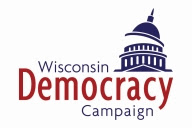Rich interests and their yes-men in the political class are fond of claiming that negative campaigning is good and the more that is spent on elections the better. The logic behind this line of bull is that no-holds-barred, no-expense-spared politicking creates a spectacle that invariably leads to the civic equivalent of rubbernecking, creating a sense of excitement about the race and building awareness of what is at stake. Which in turn boosts voter turnout. And thus democracy is served.
On a platter.
There was record spending in last year's high court race, and the advertising – whether sponsored by a candidate or outside interest groups – was squarely in the gutter. In this year's contest, spending was somewhere between one-third and a half of what it was in 2008 and the pitches for votes were made from the high road. Yet voter turnout in the two elections was virtually identical – just shy of 20 percent. Which is to say abysmal.
Voters were shortchanged in the 2007 and 2008 Supreme Court elections. We were repeatedly lied to and seats on the state's highest court were bought. But the way this year's race played out is not much better. There was no special interest hijacking like we saw last year and the year before. And we weren't force-fed a diet of deception and character assassination this time around. It's just there wasn't a contest.
Four interest groups did 90 percent of the TV advertising in last year's race. This year, one candidate did almost all the talking. Incumbent Chief Justice Shirley Abrahamson not only had a grotesque financial advantage over challenger Randy Koschnick, but she had the one interest group that weighed in on her side too.
For democracy to function at least and flourish at best, every election needs to be a competition of ideas. That means competing candidates are required, not just competing interest groups. Candidates, and not interest groups, need to be front and center because it's the candidates who are on the ballot. But it's equally essential that more than one candidate have the means to get a message out to voters because only then do voters have a meaningful choice about who will best serve the public.
Another reason more than one viable candidate is required is that elections are supposed to be instruments of accountability. Only when there are serious challengers are the views of winning candidates sufficiently challenged and their records adequately scrutinized. And only then are elected officials forced to remain reasonably faithful to those who vote them into office.
By these measures, the last three state Supreme Court races left a great deal to be desired. The most recent fell short for quite different reasons than the previous two, but nonetheless it fell short of what the public deserves and should expect. The experience of these last three elections cries out for reform.

2 comments:
Yes, blow the caps off contributions by individuals to candidates to allow them to raise the money to reach out to more voters. More speech, better democracy.
James you are a bit pathetic. Limits need to be placed at the same levels as individuals as for corporations.
Outlaw all PACs, money conduits and issue ad 501(c).
They have abused the concept of non-profit and must be stopped. 527's are Swift Boats of deceipt.
Let people pay, and limit each one to $2,300 combined for any single year.
$2,300 x 300 Million people will cover election ads.
And maybe prove it's cheaper to have public financing.
Then we would only have to pony up about $5.
Post a Comment
Note: Only a member of this blog may post a comment.